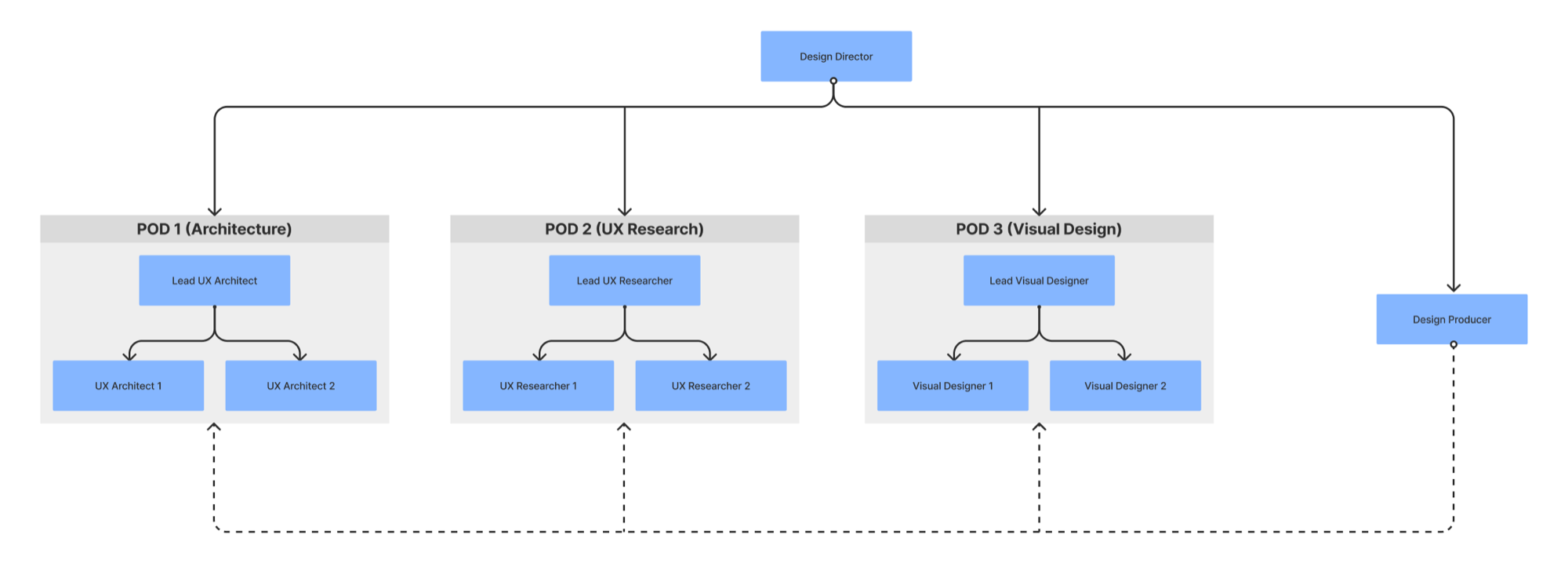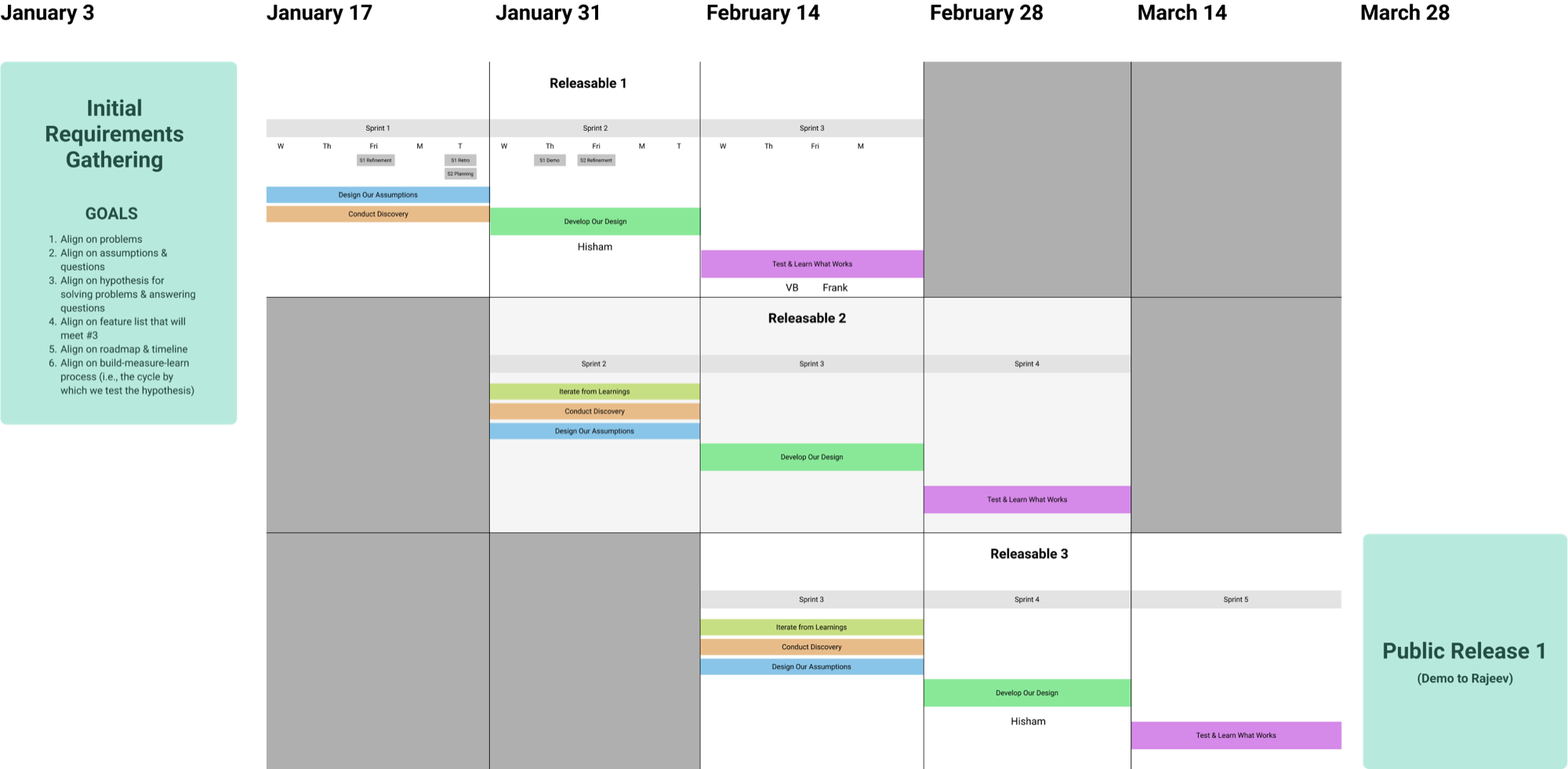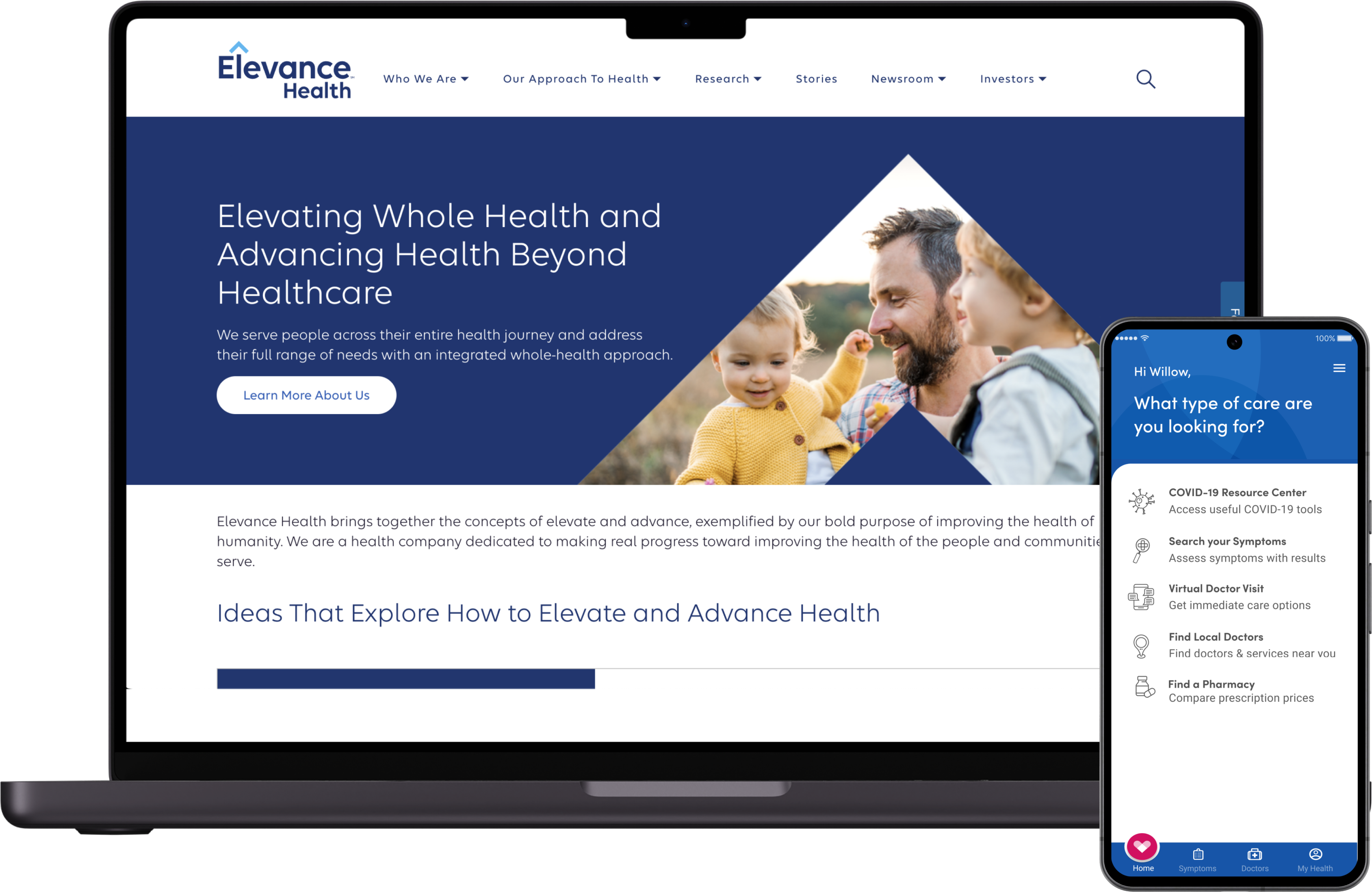Elevance Case Study
About Elevance (Formerly Anthem)
Elevance (formerly Anthem) is one of the largest for-profit managed healthcare companies in the Blue Cross Blue Shield Association, providing insurance to millions of people across the United States. While I was there, Elevance launched an innovation division to explore new ways of delivering virtual healthcare that was both convenient and cost-effective.
The Opportunity
During my tenure, medical costs in the U.S. continued to surge while global access to high-speed internet expanded. Elevance recognized an opportunity to lower patient expenses and extend quality care to rural areas via virtual solutions. The goal was to address rising costs, broaden access, and uphold rigorous quality standards.
My Role
I served as the Director of UX for Elevance's remote innovation team, which supported five products across three scrum teams. My key accomplishments included:
- Scaling the UX team from two to nine members (including contractors).
- Formalizing design operations (DesignOps).
- Implementing a dual-agile methodology.
These initiatives enabled the delivery of digital healthcare products to millions of Elevance members.
Key Responsibilities
In this role, I was accountable for:
- Managing and leading team members
- Implementing design processes
- Enforcing Design Thinking methodologies
Here's how I approached each area.
1. Managing and Leading Team Members
When I joined Elevance, the UX team had just two people: a junior UX researcher and a senior UX architect. We were responsible for five consumer-facing initiatives within the company's digital healthcare division. Our small team had to:
- Collaborate with product managers on requirements gathering
- Plan and execute product discovery activities
- Design and test digital product solutions
- Work with information architects and developers on feasibility
- Support the ongoing release cycle of production applications
Because two people simply weren't enough, I prioritized both quality work and a healthy work-life balance. To protect my team's time and meet project commitments, I:
- Engaged two carefully vetted design agencies to temporarily increase capacity
- Scheduled bi-weekly one-on-ones to stay in tune with each person's needs and career goals
- Set strict prioritization rules, requiring any new request to outrank existing tasks
- Implemented better work-in-progress tracking (detailed below)
- Outlined a lean team structure enabling us to handle multiple scrum teams plus ad hoc work
- Began recruiting for new hires, focusing on senior positions first
Within three months, I successfully expanded the team to six full-time, internal members, two full-time contractors, and two part-time contractors.

Team Structure
Ultimately, we adopted a centralized design structure. Each designer and researcher worked across one or more scrum teams. This setup fostered inter-team collaboration, diversified project knowledge, and allowed us to support more teams than a decentralized approach would have.
2. Implementing Design Processes
Introducing DesignOps
Design operations ("DesignOps") focuses on orchestrating people, processes, and craft to scale design's impact. Because this practice was relatively new to Elevance at the time, I assigned Scott—one of our senior UX architects with a passion for process management—to be our "design producer."
In this role, Scott acted much like a scrum master, monitoring work in progress, resolving roadblocks, coordinating tools, leading ceremonies, and managing stakeholder communications. By consolidating day-to-day design operations under one person, we freed up the rest of the team to concentrate on designing user-centric solutions.
Introducing Agile
At Elevance, existing scrum teams typically comprised product owners, scrum masters, and developers. Designers, however, weren't formally integrated, which left product teams competing for scarce design resources without a clear process to guide them.
To address this, I worked closely with Scott and an Agile coach to establish a semi-traditional Scrum framework specifically for our UX group. We operated on two-week sprints with standard ceremonies (standups, sprint planning, backlog grooming, reviews, and retrospectives), and collaborated with product owners to:
- Adopt a dual-track approach, where design ran one sprint ahead of development
- Align design and development tasks within user-centered stories, giving both teams a shared objective

By running this dual-agile system, we tracked work-in-progress more effectively, set clearer stakeholder expectations, and provided finalized designs to developers before each sprint began. Even skeptical teammates, initially worried about losing autonomy, eventually embraced the new approach once they saw its success.
3. Enforcing Design Thinking Methodologies
When I first arrived, Elevance (then Anthem) was transitioning from a traditional insurance model to a direct healthcare approach. Many veteran employees had decades of experience and influence, and they were used to top-down mandates. Asking them to embrace Design Thinking was a significant cultural shift.
Nonetheless, it was crucial to have stakeholders commit to these core design thinking stages:
- Empathize – Gather deep insights into user needs
- Define – Synthesize those insights into clear, actionable problems and personas
- Ideate – Use divergent thinking to brainstorm potential solutions
- Prototype – Quickly test feasibility and viability through low-fidelity models
- Test – Gather feedback to validate or invalidate design decisions
- Repeat – Use new insights to refine understanding and solutions continuously
Prior to instituting this approach, designers were often asked only to create frontend mockups for already-scoped (but unvalidated) products. This limited everyone's ability to craft user-centric solutions. By advocating for early discovery activities and championing a user-first mindset, we positioned UX as a critical strategic partner rather than just a production resource.
Conclusion
During my time at Elevance (formerly Anthem), I helped transform the organization's approach to digital healthcare delivery by:
- Building a well-rounded, centralized UX team
- Introducing formal design operations and agile methodologies
- Shifting the culture toward a user-centered, iterative mindset
These efforts led to higher-quality, cost-effective virtual healthcare solutions that reached millions of members—proving that design-driven innovation can make a measurable impact on both patient outcomes and organizational growth.
